Milbay® LiFePO4 Automotive Batteries
Milbay® LiFePO4 Automotive Batteries
Milbay LiFePO4 automotive batteries have a lower total cost of ownership when compared to lead-acid alternatives depite being a little more expensive on initial purchase.
Milbay LiFePO4 batteries have a much longer working life, require no maintenance, are lighter, reduce the occurance of road side failures and provide better starting power.
Milbay LiFePO4 batteries have a much longer working life, require no maintenance, are lighter, reduce the occurance of road side failures and provide better starting power.

LiFePO4 automotive batteries
Replacement for standard starter batteries
LiFePO4 automotive batteries
Replacement for standard starter batteries
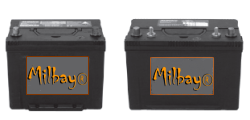
| Item | Description | Unit Price - Incl GST (AUD) |
|---|---|---|
| LifEPO4 LP12-20A300 | 12 Volt 20 Ah CCA 300 | $P.O.A |
| LifEPO4 LP12-20A400 | 12 Volt 20 Ah CCA 400 | $P.O.A |
| LifEPO4 LP12-30A400 | 12 Volt 30 Ah CCA 400 | $P.O.A |
| LifEPO4 LP12-30A600 | 12 Volt 30 Ah CCA 600 | $P.O.A |
| LifEPO4 LP12-40A600 | 12 Volt 40 Ah CCA 600 | $P.O.A |
| LifEPO4 LP12-40A800 | 12 Volt 40 Ah CCA 800 | $P.O.A |
| LifEPO4 LP12-40A1200 | 12 Volt 40 Ah CCA 1200 | $P.O.A. |
| Milbay® Automotive battery to standard Battery cross reference coming soon. | ||
| Item | Description | Unit Price - Incl GST (AUD) |
|---|---|---|
| LifEPO4 LP12-20A300 | 12 Volt 20 Ah CCA 300 | $P.O.A |
| LifEPO4 LP12-20A400 | 12 Volt 20 Ah CCA 400 | $P.O.A |
| LifEPO4 LP12-30A400 | 12 Volt 30 Ah CCA 400 | $P.O.A |
| LifEPO4 LP12-30A600 | 12 Volt 30 Ah CCA 600 | $P.O.A |
| LifEPO4 LP12-40A600 | 12 Volt 40 Ah CCA 600 | $P.O.A |
| LifEPO4 LP12-40A800 | 12 Volt 40 Ah CCA 800 | $P.O.A |
| LifEPO4 LP12-40A1200 | 12 Volt 40 Ah CCA 1200 | $P.O.A. |
| Milbay® Automotive battery to standard Battery cross reference coming soon. | ||
Milbay LiFePO4 12V Automotive Battery.
-
Up to 5 times lighter than traditional lead-acid batteries.
-
Approximately 20% more power.
LiFePO4 lasts on average 5 times longer than an equivalent lead acid battery.
-
Latest development in LiFePO4 (Lithium Ferrous Phosphate) chemistry.
Stable Long working life - 5 to 10 Years - 1500 + recharge cycles.
Integrated BMS (Battery Management System) for overcharge protection, monitor and controls the LiFePO4 battery output and recharge.
Completely maintenance free.
Zero liquid or GEL corrosives
Zero corrosive gases
Higher Return On Investment (ROI) than lead-acid batteries.
Cost effective weight reduction for Racing Vehicles - Road, Rally, Speedway etc.
-
Stronger starting currents for reliable, repeated and consecutive starts even in cold winter temperatures.
Available in standard battery case or Milbay®Racing Soft Pack.
Environmentally friendly.
Recyclable.
ROHS (Removal of Harmful Substance) Compliant.
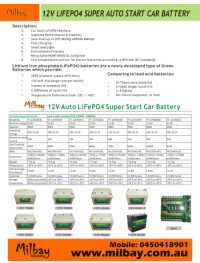
Racing Information
Whether you are replacing the battery in your Road, Rally, Speedway or other type of race vehicle then you will be searching for the best possible power storage for your vehicles electrical system, both for power starting and running the electrical system. Up until recently that meant a trade off was required between desired battery performance and weight. This could require the use of the heaviest lead-acid battery available as it can be generally said that it is the quantity and size of lead plates that will determine the batteries quality and output capacity. There have been some improvements for lead-acid battery capacity to weight ratio's with the introduction of VRLA, SLA, AGM and others but the weight reductions have been minimal and still basically leave a block of lead as our power storage.
Naturally this goes against all other development actions where generally the lightest weight for strength material would be most desired.
Fortunately this is no longer true, Milbay Australia now have available LiFePO4 Automotive batteries which store their power using the lightest metals where as lead acid batteries use one of the heaviest metals in the construction and power storage chemistry.
In such a damading activity like Motorsport safety is always the highest concern. Like all great developments LiFePO4 solves multiple constraints of the preceding technology. Not only are Milbay Automotive power cells only around 1/4 the weight of an equivalent lead acid battery they DONOT contain any liquid or corrasive materials that can be released during impact damage.
In addition the massive weight reduction makes it far more likely that the battery will remain fixed in the vehicle and not become a missile in the event of an accident. LifePO4 Power Cells from Milbay Australia are another step towards a safer Racing activity for drivers and fans alike.
Think of the Team, no body wants to move a 20 - 30 kg block of lead around.
If your Racing vehicle operates in a total loss configuration then this is also no problem, in fact our LiFePO4 Power Cells are undoubtedly the best choice for a Total Loss scenario. Milbay LiFePO4 Power Cells are inherently "Deep Cycle" and can handle 1500 + 80% DOD (Depth of Discharge) cycles where as lead-acid battery types will fail after around 200 cycles. Best of all there is no need for one battery to start your vehicle and a second battery to run the electrical system whilst racing.
Milbay LiFePO4 standard replacement batteries for Automotive vehicles are a direct replacement for the original vehicle battery and install as per the vehicle's service manual. The LiFePO4 battery is located inside an original style battery case that uses original style bolt on terminals and dimensions.

Milbay LiFePO4 Racing SoftPacs are NOT installed inside a traditional plastic case so that drivers and race teams can customise the installation and case materials to take advantage of the smaller form factor of the naked SoftPac design. Milbay LiFePO4 Racing SoftPac batteries generally have the positive and negative cables terminated with a quick release 'Andersons' connector to aid in customisation options for users. Other standard type or custome connectors are available.
Milbay supply light weight jump starter LiFePO4 batteries that can delivery 1200+ CCA (Cold Cranking Amps) and large capacity for constant jump starts or diagnosis.
Please Contact Milbay for a quote or advice.
For more information or to recieve a quote Contact Milbay Australia or fill out the online enquiry form.
Installation Information
Milbay LiFePO4 Power Cells are a leap forward in automotive starter battery technology. Milbay LiFePO4 batteries are a light weight 12V battery which directly replace the original heavy lead-acid battery. Milbay LiFePO4 Automotive batteries produce high CCA (cold Cranking Amps) under extreme temperature conditions.
Because Milbay Automotive batteries are installed into our standard battery cases your new Milbay LiFePO4 battery can be installed using the vehicle's orginal mounting brackets and terminals without modifications.
Milbay Automotive LiFePO4 Power Cells recharge from the vehicle alternator just like a standard battery thanks to our innovative automotive starter BMS (Battery Management System).
If you are looking for a Milbay automotive battery for a race vehicle then there is the option of a Milbay Automotive Racing SoftPac battery, please click on the 'Racing' tab for more information.
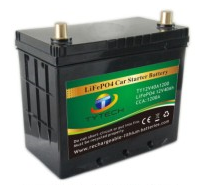
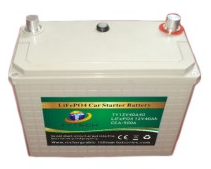

For more information or to recieve a quote Contact Milbay Australia or fill out the online enquiry form.
FAQs - Frequently Asked Questions about LiFePO4, Lithium Ion and LIPO
FAQs - Frequently Asked Questions about LiFePO4, Lithium Ion and LIPO
How to care for your lithium battery and Charger
How to care for your lithium battery and Charger
Always store any lithium type battery (LIPO - Polymer, LiIon - Lithium Ion, LFP - LifePO4 Lithium Ferrous Phosphate) with a full charge and batteries should be recharged every 3 months.
Recharging
Recharge your lithium battery after every use regardless of the level of discharge ie. how much the battery has been drained during use. Lithium batteries will last longer and provide better power output if recharged after every use, the more shallow the Depth Of Discharge (D.O.D) the greater the recharge cycles.
Chargers
Most lithium batteries will last over three years if correctly maintained so it is recommended that a new charger is purchased along with a replacement battery. Each lithium battery type requires a charger that uses the correct charging method and voltage to safely charge the battery pack and provide the longest battery life.
Improvements to battery charger electronics and design may also have occurred in the time since the first charger was purchased.
Most common reason for charger failure.
A failed fan in chargers (that use a fan) is the most common reason for charger failure which can increase the chance of damage to the Lithium battery pack. The fans in the battery chargers have a limited life so repair or replace any charger that has a failed fan.
Charger electrical compliance.
Chargers that plug into the normal 240V power outlets sold in Australia must meet Australian electrical compliance, generally this is indicated by the C Tick logo or the new Single Compliance mark, as shown in image below.
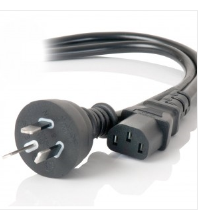
What does the C rating on a Lithium battery pack mean ?
What does the C rating on a Lithium battery pack mean ?
The C rating is the maximum safe continuous discharge rate of a battery pack.
10C means the battery pack can be discharged at 10 times that pack's capacity.
The Capacity rating of the battery pack is generally shown in milliamp hours, a milliamps is equal to 1/1000 of an amp.
The battery pack capacity rating will be printed on the battery pack or outer case as a number followed by mAh
Example : 2000mAh, which is equal to 2.0 Ah.
To find your battery's discharge rate multiply the number from the C rating by the pack's capacity.
Here is a calculation example using an 60V 22000mAh 10C (Electric unicycle battery pack)
Details from battery pack label : 60 volt 2200mAh -10C
2200 milliamps = 2.2 amps
2.2 Amps x 10 = 22 amps continuous discharge
Result : The 60V 2200mAh 10C battery pack can safely draw up to 22 amps continuously without causing a problem.
The cell will also have a peak value that is applicable for a few seconds or short period of maxium motor load where the motor power will peak.
What is a 'Wh' Rating, why use it to calculate power capacity ?
What is a 'Wh' Rating, why use it to calculate power capacity ?
A simply explaination of work is how many kilometers can be travelled on a electric bicycle or how long a solar power storage unit could keep a fridge running for at night.
A 12V 10 Ah Lithium Ion bicycle battery would be calculated as 4 (number of cells in series) x 3.7V (nominal cell volatge) = 14.8V x 10000Mah - 10Ah (capacity of each cell) = 148Wh
A 60V 2.2 Ah Lithium Ion unicycle battery would be calculated as 16 (number of cells in series) x 3.7V (nominal cell volatge) = 59.2V x 2200Mah - 2.2Ah (capacity of each cell) = 130Wh
Are there different types of Lithium battery packs, what are the differences ?
Are there different types of Lithium battery packs, what are the differences ?
LiFePO4 Safety
LiFePO4 Safety
It is commonly accepted that LiFePO4 battery does not decompose at high temperatures.
How long is the warranty on LiFePO4 batteries ?
How long is the warranty on LiFePO4 batteries ?
Electrical Calculations
Electrical Calculations
A history of Battery Developement
A history of Battery Developement
|
Year
|
Inventor
|
Activity
|
|
1600
|
William Gilbert (UK)
|
Establishment of electrochemistry study
|
| 1745 | Ewald George von Kleist (Netherlands) | Invention of Leyden jar. Stores static electricity |
|
1791
|
Luigi Galvani (Italy)
|
Discovery of “animal electricity”
|
|
1800
1802
1820
1833
1836
1839
1859
1868
1899
|
Alessandro Volta (Italy)
William Cruickshank (UK)
André-Marie Ampère (France)
Michael Faraday (UK)
John F. Daniell (UK)
William Robert Grove (UK)
Gaston Planté (France)
Georges Leclanché (France)
Waldmar Jungner (Sweden)
|
Invention of the voltaic cell (zinc, copper disks)
First electric battery capable of mass production
Electricity through magnetism
Announcement of Faraday’s law
Invention of the Daniell cell
Invention of the fuel cell (H2/O2)
Invention of the lead acid battery
Invention of the Leclanché cell (carbon-zinc)
Invention of the nickel-cadmium battery
|
|
1901
1932
1947
1949
1970s
1990
1991
1994
1996
1996
|
Thomas A. Edison (USA)
Shlecht & Ackermann (D)
Georg Neumann (Germany)
Lew Urry, Eveready Battery
Group effort
Group effort
Sony (Japan)
Bellcore (USA)
Moli Energy (Canada)
University of Texas (USA)
|
Invention of the nickel-iron battery
Invention of the sintered pole plate
Successfully sealing the nickel-cadmium battery
Invention of the alkaline-manganese battery
Development of valve-regulated lead acid battery
Commercialization of nickel-metal-hydride battery
Commercialization of lithium-ion battery
Commercialization of lithium-ion polymer
Introduction of Li-ion with manganese cathode
Identification of Li-phosphate (LiFePO4)
|
|
2002
|
University of Montreal, Quebec Hydro, MIT, others
|
Improvement of Li-phosphate, nanotechnology, commercialization
|
How to care for your lithium battery and Charger
How to care for your lithium battery and Charger
Always store any lithium type battery (LIPO - Polymer, LiIon - Lithium Ion, LFP - LifePO4 Lithium Ferrous Phosphate) with a full charge and batteries should be recharged every 3 months.
Recharging
Recharge your lithium battery after every use regardless of the level of discharge ie. how much the battery has been drained during use. Lithium batteries will last longer and provide better power output if recharged after every use, the more shallow the Depth Of Discharge (D.O.D) the greater the recharge cycles.
Chargers
Most lithium batteries will last over three years if correctly maintained so it is recommended that a new charger is purchased along with a replacement battery. Each lithium battery type requires a charger that uses the correct charging method and voltage to safely charge the battery pack and provide the longest battery life.
Improvements to battery charger electronics and design may also have occurred in the time since the first charger was purchased.
Most common reason for charger failure.
A failed fan in chargers (that use a fan) is the most common reason for charger failure which can increase the chance of damage to the Lithium battery pack. The fans in the battery chargers have a limited life so repair or replace any charger that has a failed fan.
Charger electrical compliance.
Chargers that plug into the normal 240V power outlets sold in Australia must meet Australian electrical compliance, generally this is indicated by the C Tick logo or the new Single Compliance mark, as shown in image below.

What does the C rating on a Lithium battery pack mean ?
What does the C rating on a Lithium battery pack mean ?
The C rating is the maximum safe continuous discharge rate of a battery pack.
10C means the battery pack can be discharged at 10 times that pack's capacity.
The Capacity rating of the battery pack is generally shown in milliamp hours, a milliamps is equal to 1/1000 of an amp.
The battery pack capacity rating will be printed on the battery pack or outer case as a number followed by mAh
Example : 2000mAh, which is equal to 2.0 Ah.
To find your battery's discharge rate multiply the number from the C rating by the pack's capacity.
Here is a calculation example using an 60V 22000mAh 10C (Electric unicycle battery pack)
Details from battery pack label : 60 volt 2200mAh -10C
2200 milliamps = 2.2 amps
2.2 Amps x 10 = 22 amps continuous discharge
Result : The 60V 2200mAh 10C battery pack can safely draw up to 22 amps continuously without causing a problem.
The cell will also have a peak value that is applicable for a few seconds or short period of maxium motor load where the motor power will peak.
What is a 'Wh' Rating, why use it to calculate power capacity ?
What is a 'Wh' Rating, why use it to calculate power capacity ?
A simply explaination of work is how many kilometers can be travelled on a electric bicycle or how long a solar power storage unit could keep a fridge running for at night.
A 12V 10 Ah Lithium Ion bicycle battery would be calculated as 4 (number of cells in series) x 3.7V (nominal cell volatge) = 14.8V x 10000Mah - 10Ah (capacity of each cell) = 148Wh
A 60V 2.2 Ah Lithium Ion unicycle battery would be calculated as 16 (number of cells in series) x 3.7V (nominal cell volatge) = 59.2V x 2200Mah - 2.2Ah (capacity of each cell) = 130Wh
Are there different types of Lithium battery packs, what are the differences ?
Are there different types of Lithium battery packs, what are the differences ?
LiFePO4 Safety
LiFePO4 Safety
It is commonly accepted that LiFePO4 battery does not decompose at high temperatures.
How long is the warranty on LiFePO4 batteries ?
How long is the warranty on LiFePO4 batteries ?
Electrical Calculations
Electrical Calculations
A history of Battery Developement
A history of Battery Developement
|
Year
|
Inventor
|
Activity
|
|
1600
|
William Gilbert (UK)
|
Establishment of electrochemistry study
|
| 1745 | Ewald George von Kleist (Netherlands) | Invention of Leyden jar. Stores static electricity |
|
1791
|
Luigi Galvani (Italy)
|
Discovery of “animal electricity”
|
|
1800
1802
1820
1833
1836
1839
1859
1868
1899
|
Alessandro Volta (Italy)
William Cruickshank (UK)
André-Marie Ampère (France)
Michael Faraday (UK)
John F. Daniell (UK)
William Robert Grove (UK)
Gaston Planté (France)
Georges Leclanché (France)
Waldmar Jungner (Sweden)
|
Invention of the voltaic cell (zinc, copper disks)
First electric battery capable of mass production
Electricity through magnetism
Announcement of Faraday’s law
Invention of the Daniell cell
Invention of the fuel cell (H2/O2)
Invention of the lead acid battery
Invention of the Leclanché cell (carbon-zinc)
Invention of the nickel-cadmium battery
|
|
1901
1932
1947
1949
1970s
1990
1991
1994
1996
1996
|
Thomas A. Edison (USA)
Shlecht & Ackermann (D)
Georg Neumann (Germany)
Lew Urry, Eveready Battery
Group effort
Group effort
Sony (Japan)
Bellcore (USA)
Moli Energy (Canada)
University of Texas (USA)
|
Invention of the nickel-iron battery
Invention of the sintered pole plate
Successfully sealing the nickel-cadmium battery
Invention of the alkaline-manganese battery
Development of valve-regulated lead acid battery
Commercialization of nickel-metal-hydride battery
Commercialization of lithium-ion battery
Commercialization of lithium-ion polymer
Introduction of Li-ion with manganese cathode
Identification of Li-phosphate (LiFePO4)
|
|
2002
|
University of Montreal, Quebec Hydro, MIT, others
|
Improvement of Li-phosphate, nanotechnology, commercialization
|
Milbay® LiFePO4 12V Automotive Battery.
- Up to 5 times lighter than traditional lead-acid batteries.
- Approximately 20% more power.
- LiFePO4 lasts on average 5 times longer than an equivalent lead acid battery.
-
Latest development in LiFePO4 (Lithium Ferrous Phosphate) chemistry.
- Stable Long working life - 5 to 10 Years - 1500 + recharge cycles.
- Integrated BMS (Battery Management System) for overcharge protection, monitor and controls the LiFePO4 battery output and recharge.
- Completely maintenance free.
- Zero liquid or GEL corrosives
- Zero corrosive gases
- Higher Return On Investment (ROI) than lead-acid batteries.
- Cost effective weight reduction for Racing Vehicles - Road, Rally, Speedway etc.
- Stronger starting currents for reliable, repeated and consecutive starts even in cold winter temperatures.
- Available in standard battery case or Milbay®Racing Soft Pack.
- Environmentally friendly.
- ROHS (Removal of Harmful Substance) Compliant.

Racing Information

Please Contact Milbay for a quote or advice.
Installation Information


